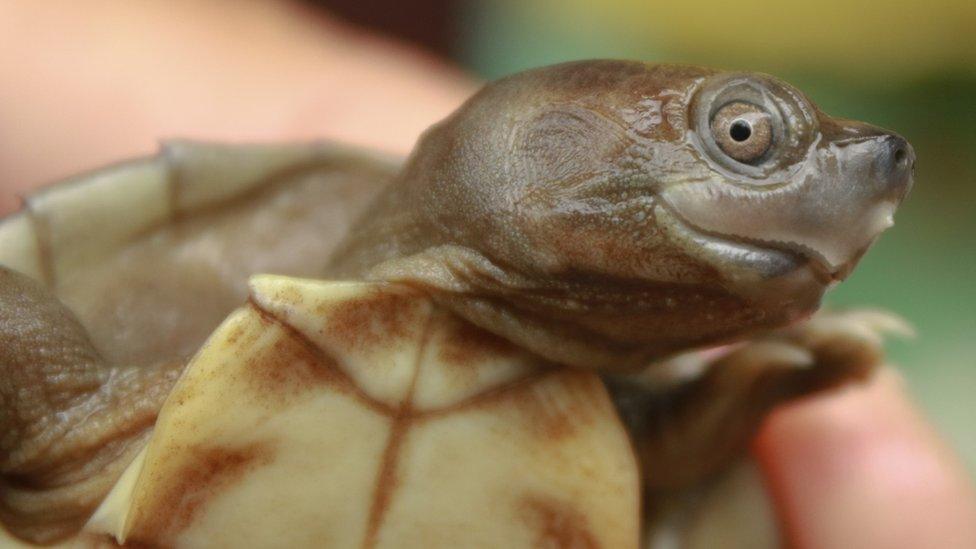The Burmese roofed turtle: Smiling turtles saved from extinction
- Published

The Burmese roofed turtle, also known as the smiling turtle, has been saved from extinction.
It was once the second most critically endangered turtle in the world.
The species was believed to be extinct until conservationists from the Wildlife Conservation Society (WCS) and the Turtle Survival Alliance (TSA) rediscovered it in the wild in the early 2000s.
The WCS and TSA have now successfully raised nearly 1,000 of the turtles in captivity and soon they will be ready for release into the wild.
Why are they called the smiling turtle?
The turtles mouth turns up slightly which makes it seem to have a constant smile on its face.
The turtles originated in Myanmar, Burma. Burma is a country that is in Southeast Asian and borders India, Bangladesh, China, Laos and Thailand.
How have they been saved from extinction?
Conservationists recreated their natural habitat using sandbanks as a place to nest. They then monitored the site and collect their eggs so they could be looked after and incubated under natural conditions.
What does Endangered mean?
Species that are threatened are placed into three categories, according to charity WWF:
Critically endangered: a species facing extremely high risk of extinction in the wild
Endangered: A species facing very high risk extinction in the wild
Vulnerable: A species considered to be facing high risk of extinction in the wild
Conservations will now look at the turtles which still live in the wild. They think there are five to six adult females and maybe two males.
Why did they nearly become extinct?
There was a time when lots of these turtles were around. But because of hunting, electro-fishing and destruction of their natural habitat they weren't surviving.
With the population now at nearly 1,000 the species is now in a much better place and much less likely to go extinct.
- Published14 May 2020
- Published10 September 2020
